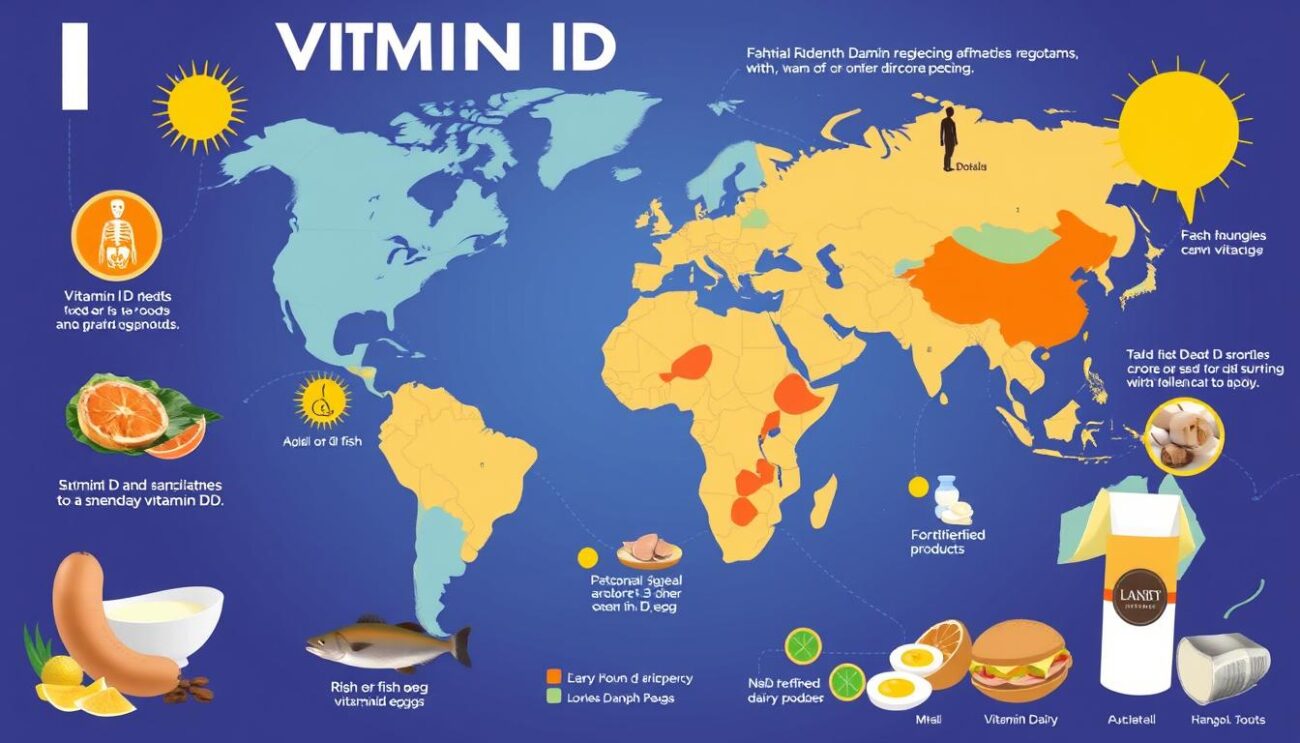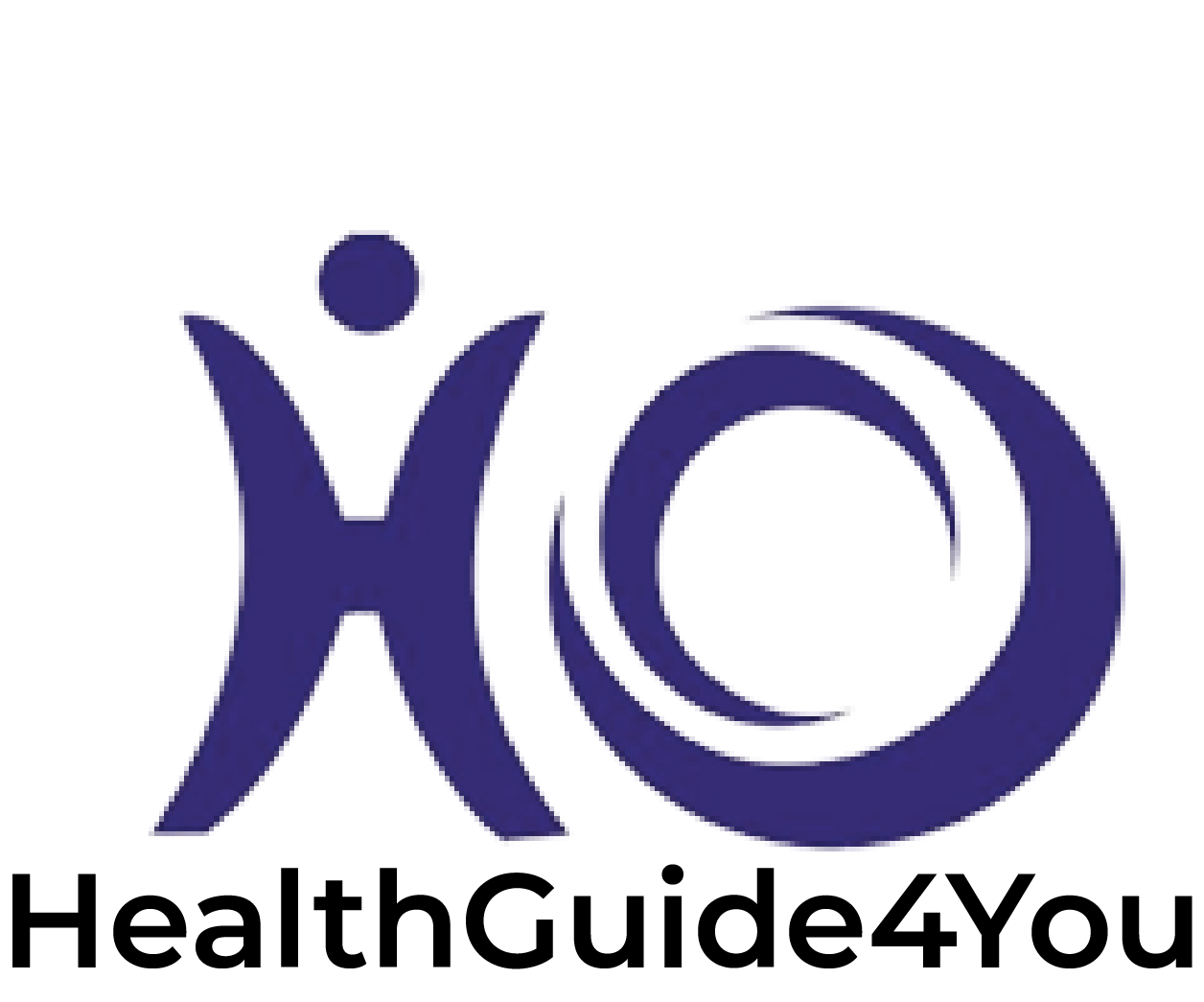Did you know that about 35% of adults in the U.S. don’t get enough vitamin D? Also, around 1 billion people worldwide face vitamin D deficiency or insufficiency. Vitamin D is key for your health, but many find it hard to get enough. We’ll look into what vitamin D insufficiency is, why it matters, and how to make sure you get enough.

Key Takeaways
- Vitamin D deficiency is a common global health issue, affecting up to 1 billion people worldwide.
- Vitamin D is essential for bone health, immune function, and overall well-being.
- Insufficient sun exposure, certain medical conditions, and certain medications can contribute to vitamin D deficiency.
- Symptoms of vitamin D deficiency include fatigue, bone pain, and increased illness.
- Dietary sources and supplements can help increase vitamin D levels, but individual needs may vary.
What is Vitamin D Insufficiency?
Vitamin D deficiency is when you don’t have enough vitamin D in your body. This can lead to problems with your bones and muscles.
Vitamin D is key for healthy bones and muscles. It also helps your nervous, musculoskeletal, and immune systems work right.
Importance of Vitamin D
Vitamin D keeps your body balanced with calcium and phosphorus. These minerals are important for strong bones. Without enough vitamin D, you might get conditions like weak bones or more fractures.
Causes and Risk Factors
Not getting enough sunlight is the main reason for vitamin D deficiency. Your body makes vitamin D when your skin gets UV rays. Being overweight, having digestive issues, darker skin, or taking certain medicines can also increase your risk.
Some groups are more likely to have vitamin D deficiency. This includes babies, kids, older people, those who don’t get much sun, and those with health issues that affect vitamin D.
“Vitamin D deficiency is a common global health issue, affecting an estimated 1 billion people worldwide.” –
Importance of Vitamin D
Vitamin D is key for keeping the right balance of calcium in your blood and bones. It helps build and keep strong, healthy bones. This nutrient helps your body absorb calcium and phosphorus. Without it, you might get conditions like low calcium levels, soft bones, or increased risk of breaking bones.
Having enough vitamin D is crucial for your bones to stay healthy. If your vitamin D levels are too low, you could face problems like soft bones in kids or adults. The goal is to keep your levels above 50 nmol/L (20 ng/mL) for good bone and overall health.
Vitamin D does more than just help bones. It’s also important for your nervous, musculoskeletal, and immune systems. Being short on vitamin D can lead to bone issues, higher risk of breaking bones, and other health problems.
To keep your vitamin D levels up, spend time in the sun to make it naturally. Eating foods high in vitamin D like fatty fish, egg yolks, and fortified dairy can also help.
Who is Affected by Vitamin D Deficiency?
Vitamin D deficiency can affect people of all ages, from babies to adults. But, some groups face a higher risk.
Those with darker skin, like Africans or Hispanics, are more likely to lack vitamin D. This is because their skin doesn’t make as much vitamin D from sunlight. Also, people who wear a lot of clothing for cultural or religious reasons are at higher risk.
Places with little sunlight can also lead to more vitamin D deficiency. For example, over 90% of babies in Iran, Turkey, and India lack this important nutrient.
| Population | Vitamin D Deficiency Rates |
|---|---|
| African American infants in the U.S. | 47% |
| Caucasian infants in the U.S. | 56% |
| Adults in the U.S. | 35% |
| Elderly population in the U.S. | 61% |
| Adults in Pakistan, India, and Bangladesh | Over 80% |
| Elderly in Turkey, India, Pakistan, and Iran | 67%-96% |
Other factors that increase the risk of vitamin D deficiency include being overweight, having digestive issues, or taking certain medicines. It’s important to keep vitamin D levels up for good health. If you’re at risk, talk to your doctor about tests and treatments.
Prevalence of Vitamin D Deficiency
Vitamin D deficiency is a big health issue worldwide, affecting about 1 billion people. In fact, half of the world’s population lacks enough vitamin D. In the US, 35% of adults don’t have enough vitamin D.
Studies show that 2.6% of people have severe vitamin D deficiency, and 22% have moderate deficiency. About 40.9% are not getting enough vitamin D, while 34.5% are considered sufficient. These numbers show how widespread vitamin D deficiency is.
From 2001 to 2018, more people got enough vitamin D, but severe deficiency didn’t change much. This shows a slow but steady improvement in vitamin D levels.
Many things affect vitamin D levels, like age, sex, race, and how much sun you get. Other factors include your weight, income, drinking, and eating habits.
In the US, 5% of people have very low vitamin D levels, and 28.9% are deficient. By 2011-2014, 5% had levels below 30 nmol/L, and 18.3% were between 30-50 nmol/L.
These numbers show how common vitamin D deficiency is worldwide. We need more awareness and action to tackle this health issue.

Experts agree that levels below 25 or 30 nmol/l are too low. The US Institute of Medicine says levels below 30 nmol/L are deficient. The Endocrine Society also has its own guidelines for vitamin D levels.
A big study looked at vitamin D levels from 2000 to 2022, using data from 67,340 articles. It looked at many factors, like where you live, the season, and your health status.
This study highlights the big problem of vitamin D deficiency worldwide. We need to take action to help people get enough vitamin D.
Causes and Risk Factors
Not getting enough sunlight is the main reason for vitamin D deficiency. Studies show that about 40% of Europeans lack enough vitamin D, with 13% being severely short. This severe lack of vitamin D is a big issue.
Other factors that increase the risk of vitamin D deficiency include being overweight, having disorders that affect nutrient absorption, having darker skin, and taking certain medicines. People most at risk are those who rarely go outside, like the elderly, those who work indoors, and those living far from the equator.
Vitamin D Deficiency in Children and Infants
Kids who don’t get enough vitamin D from the sun may become deficient, especially in places where kids stay indoors a lot. Darker skin makes it harder for the body to make vitamin D from sunlight because of melanin. Babies who only drink breast milk can also lack vitamin D, as breast milk doesn’t have enough of it to prevent rickets.
| Prevalence of Severe Vitamin D Deficiency | Europe | United States | Canada |
|---|---|---|---|
| Severe Deficiency ( | 13% | 5.9% | 7.4% |
| Deficiency ( | 40% | 24% | 37% |
Some health issues like celiac disease, inflammatory bowel disease, cystic fibrosis, and kidney problems can make it hard for kids to absorb vitamin D, leading to rickets. Babies born too early also tend to have lower vitamin D levels because they didn’t get much of it from their mothers during pregnancy.
To avoid vitamin D deficiency, it’s advised that all babies get 400 IU of vitamin D daily, especially if they only drink breast milk. But, it’s important to protect babies from too much sun to prevent skin cancer, which can lower vitamin D production.
Symptoms of Vitamin D Deficiency
Many people with vitamin D deficiency don’t show any signs. But, some may face health problems. Fatigue, bone pain, and muscle weakness are signs you might be lacking this important nutrient. Mood changes like increased anxiety, irritability, and depression are also linked to low vitamin D levels.
In kids, a lack of vitamin D can cause rickets, leading to bowed legs and delays in motor skills. Adults might develop osteoporosis or osteopenia, raising their risk of breaking bones. Look out for frequent illness, muscle and joint pain, and unexplained weight gain.
Some groups are more likely to have vitamin D deficiency. This includes non-Hispanic Black people, those with conditions like celiac disease, and people who stay indoors a lot. It’s key to keep vitamin D levels up for good health.
| Symptoms of Vitamin D Deficiency |
|---|
| Fatigue |
| Bone pain |
| Muscle weakness |
| Mood changes (anxiety, irritability, depression) |
| Frequent illness |
| Muscle and joint pain |
| Unexplained weight gain |
| Rickets (in children) |
| Osteoporosis/Osteopenia (in adults) |

Dietary Sources of Vitamin D
The sun is the main source of vitamin D for many. But, some foods are also great dietary sources of vitamin D. Fatty fish like salmon, tuna, and mackerel are top choices, offering lots of this important nutrient.
Egg yolks, beef liver, and fish liver oils are also good for vitamin D. Many foods are made with vitamin D too, like cereals, milk, almond milk, soy milk, and orange juice.
Natural Vitamin D-Rich Foods
- Fatty fish (salmon, tuna, mackerel): 214-924 IU per 3.5-ounce serving
- Cod liver oil: 450 IU per teaspoon
- Egg yolks: 37 IU per large yolk
- Beef liver: variable vitamin D content
- UV-exposed mushrooms: 1,110 IU per cup
Fortified Foods with Vitamin D
- Cow’s milk: 115 IU per cup
- Soy milk: 100-119 IU per cup
- Fortified orange juice: up to 100 IU per cup
- Fortified cereals: variable vitamin D content
Adding these dietary sources of vitamin D to your meals can help you get enough of this vital nutrient.
“Fatty fish, egg yolks, and fortified foods are all excellent sources of vitamin D, helping to ensure you get enough of this essential nutrient in your diet.”
Sunlight Exposure for Vitamin D
Getting regular sunlight helps your body make vitamin D naturally. The sun’s UV rays turn 7-dehydrocholesterol in your skin into previtamin D3, then into active vitamin D. This process makes over 80% of your vitamin D.
How much vitamin D you make depends on where you live, the season, your skin color, and if you use sun protection. In places like Kansas City, Missouri, 8-10 minutes of sun at noon in spring and summer can give you enough vitamin D. But in winter, you might need almost 2 hours of sun with just 10% of your body exposed.
While sunlight is key for making vitamin D, be careful not to get too much sun. Too much UV can cause too much vitamin D, leading to health problems. It’s all about finding a balance to get enough vitamin D without risking skin cancer.
To keep your vitamin D levels healthy, regular, moderate sun exposure is best. But remember to consider your skin type, location, and the season to get the right amount of sun.
Vitamin D Supplements
Vitamin D3 supplements are a good way to boost your vitamin D levels. Adults need 600 IU daily, but some might get 700 to 800 IU to fix a severe lack.
Many older people don’t get enough vitamin D. In the U.S., fortified milk is a key source, offering 100 IU per 8-ounce serving. Yet, not getting enough sun and having darker skin ups the risk of not having enough vitamin D.
Levels under 20 ng/mL (50 nmol/L) are bad for bones. For those with very low levels, taking 25,000 to 50,000 IU of vitamin D2 or D3 weekly for a few weeks can help. Experts suggest adults take 800 IU (20 mcg) daily to stay healthy.
Sunlight can make vitamin D, but it’s not a safe long-term option because of skin cancer risks. Too much vitamin A from foods like cod liver oil can harm the liver and bones.
If you think you’re not getting enough vitamin D, talk to your doctor. They can check your levels and suggest what to do next. Taking the right vitamin D supplements can keep your bones strong and might lower the chance of falling and breaking bones as you age.
Testing and Treatment
If you think you might have a vitamin D deficiency, start with a blood test. This test checks your vitamin D levels and tells you if you need supplements. The Centers for Disease Control and Prevention found that vitamin D levels dropped from about 60% in the late 1980s to around 30% in the early 2000s for whites. For African Americans, it fell from about 10% to around 5% during the same period.
After finding out your vitamin D levels, you might need to take supplements, possibly with calcium, to fix the deficiency. These supplements help treat low vitamin D levels, and tests can show if you’re deficient or not. The treatment depends on how low your levels are:
- For individuals with vitamin D levels 3.
- For those with vitamin D levels between 12 to 3.
- Adults with vitamin D levels of 20 to 30 ng/mL are usually maintained on 600 to 800 international units of vitamin D3 daily.
- For infants and children with vitamin D levels 3.
Adults should take 800 international units of vitamin D daily, while kids need 400 units. But, too much vitamin D can cause problems like high blood calcium or kidney stones.
Working with your healthcare provider helps you find the right treatment for your vitamin D deficiency. This ensures you stay healthy and well.
Conclusion
Vitamin D deficiency is a big health problem worldwide. It affects bone health, the immune system, and overall wellbeing. Studies show it helps prevent hip fractures and boosts muscle strength. These are key for staying healthy, especially as we get older.
Knowing how vitamin D helps, spotting risk factors, and getting enough from sunlight, food, and supplements keeps your levels right. Being short on vitamin D means having less than 30 ng per mL of blood. Yet, taking too much vitamin D, over 4,000 IU a day, isn’t good unless a doctor says so.
Having the right vitamin D levels, 50 nmol/l to 125 nmol/l, brings many benefits. It helps with nerve and brain growth and might lower cancer risk. Since many in the U.S., up to 24%, lack enough vitamin D, especially African Americans and Hispanics, you can act to get enough.
